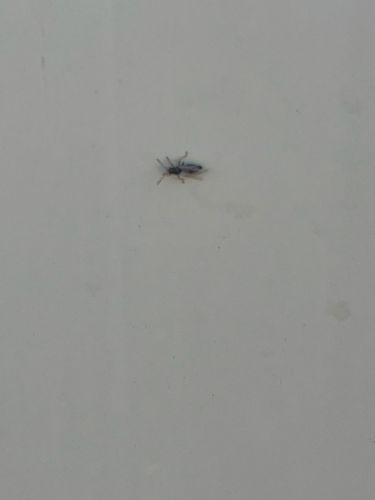Springtail
Scientific Name: Various species within Collembola
Order & Family: Order Collembola (formerly considered an order within Insecta, now often recognized as a separate class within Hexapoda)
Size: Typically 0.2 mm to 10 mm in length, with most common species being less than 6 mm.

Natural Habitat
Springtails thrive in moist, dark environments rich in organic matter. Common habitats include soil, leaf litter, rotting wood, compost piles, under bark, in potted plants, and sometimes in damp indoor areas like bathrooms or basements.
Diet & Feeding
Springtails primarily feed on decaying organic matter, fungi, algae, bacteria, and sometimes plant spores. Some species may feed on living plant roots but are generally not considered major plant pests.
Behavior Patterns
Springtails are known for their ability to jump using a furcula, a tail-like appendage folded under their abdomen. When disturbed, they release the furcula, propelling themselves into the air. They are detritivores, often found in damp environments, particularly in soil and leaf litter. They are typically harmless and do not bite or sting.
Risks & Benefits
Generally harmless to humans and pets, as they do not bite or transmit diseases. They are beneficial decomposers in ecosystems, contributing to nutrient cycling by breaking down organic matter. In some instances, large populations can become a nuisance indoors, indicating high humidity or moisture problems.
Identified on: 8/30/2025